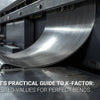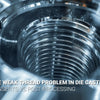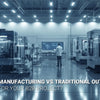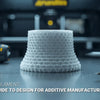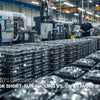What Is Low Pressure Die Casting: A Comprehensive Guide to Materials, Methods, and Manufacturing Applications?
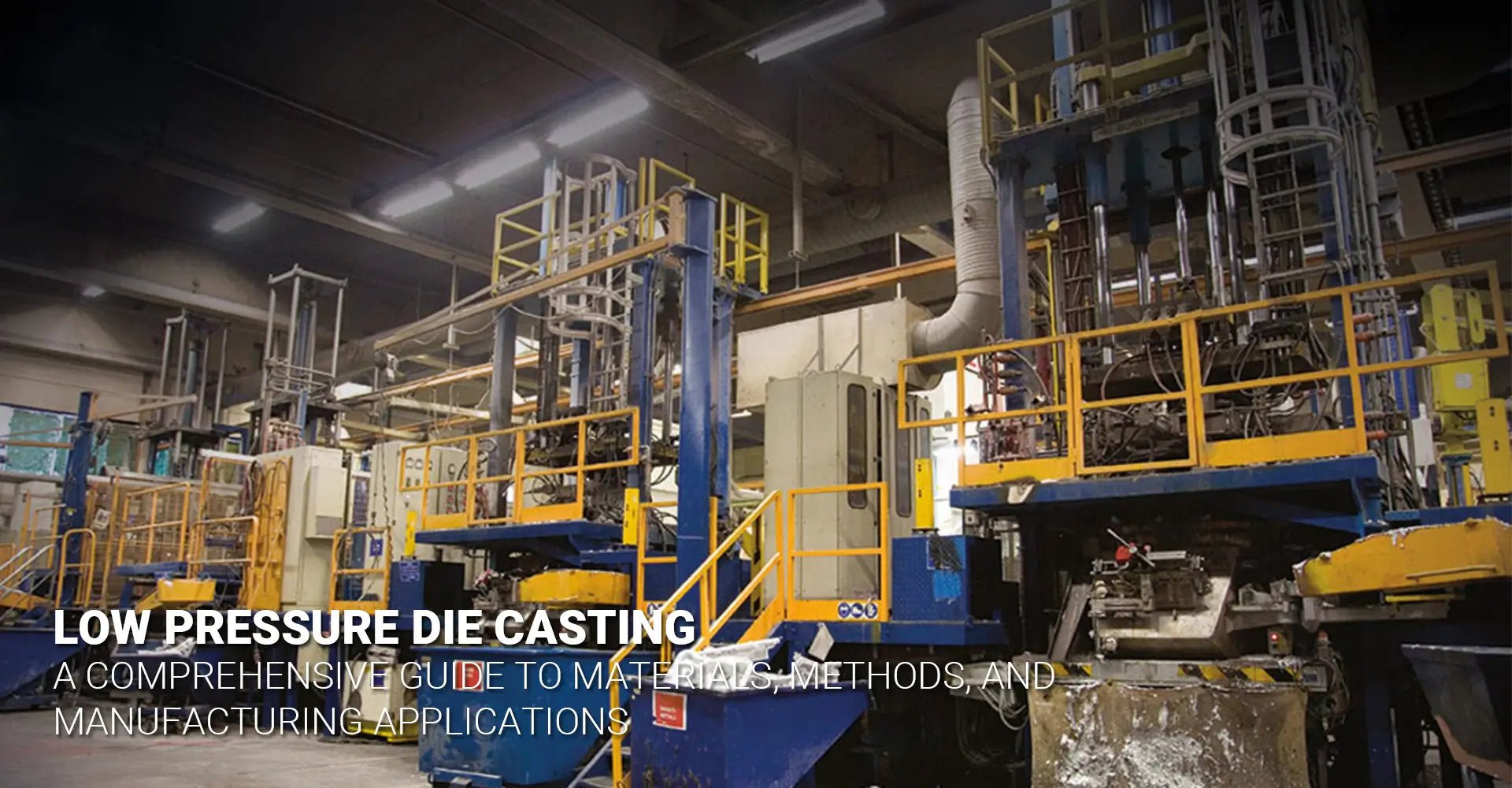
What Is Low Pressure Die Casting: A Comprehensive Guide to Materials, Methods, and Manufacturing Applications?

In today's manufacturing landscape, precision and quality control are paramount. Low Pressure Die Casting (LPDC) stands as a cornerstone technology that delivers exceptional results for complex metal components. This comprehensive guide explores why manufacturers increasingly turn to LPDC for their critical production needs.
LPDC offers superior control over metal flow and solidification, resulting in high-quality parts with minimal porosity and excellent surface finish. This process is particularly valuable for automotive and electronics components where consistency and precision are crucial.
Before we dive deep into the specifics of LPDC, it's important to understand how this method fits into the broader spectrum of die casting processes and why it might be the right choice for your manufacturing needs.
Table of Contents
- How Does Low Pressure Die Casting Actually Work?
- What Materials Can You Use in Low Pressure Die Casting?
- Why Choose Low Pressure Die Casting Over Other Methods?
- Which Industries Rely on Low Pressure Die Casting?
- What Are the Design Requirements for LPDC Parts?
- How Does LPDC Impact Production Quality?
- What Challenges Do Manufacturers Face with LPDC?
How Does Low Pressure Die Casting Actually Work?
The foundation of LPDC lies in its controlled approach to metal casting. Unlike traditional methods, this process relies on precisely regulated pressure to achieve optimal results.
The process begins in a sealed furnace where metal is melted and maintained at a specific temperature. Using pneumatic pressure ranging from 0.5 to 2 bar, the molten metal is gradually forced upward through a feed tube into the die cavity.

A key distinction of LPDC is its ability to maintain consistent pressure throughout the entire casting cycle. This results in:
- Controlled metal flow rates
- Uniform solidification patterns
- Minimal turbulence during filling
- Reduced air entrapment
What Materials Can You Use in Low Pressure Die Casting?
Material selection plays a crucial role in the success of LPDC operations. The most commonly used materials offer a balance of castability and performance.
Common materials include:
-
Aluminum Alloys
- A356 (AlSi7Mg):
- Excellent fluidity and feeding characteristics
- Tensile strength: 230-280 MPa
- Ideal for structural components
- Common in automotive wheels and cylinder heads
- A380 (AlSi8Cu3):
- Superior pressure tightness
- Tensile strength: 315-330 MPa
- Excellent for complex geometries
- Used in powertrain components
Magnesium Alloys
- AZ91D:
- Density: 1.81 g/cm³
- Yield strength: 160 MPa
- 30% lighter than aluminum
- Perfect for thin-walled components
Copper Alloys
- Bronze alloys:
- Higher thermal conductivity
- Better wear resistance
- Used in specialized industrial applications
- Operating temperatures up to 260°C
- A356 (AlSi7Mg):
Each material requires specific process parameters:
- Aluminum: Die temperature 200-250°C
- Magnesium: Die temperature 150-200°C
- Copper alloys: Die temperature 300-350°C
Each material choice impacts the final surface finish and overall part quality. Manufacturers must consider factors such as:
- Melting point and fluidity
- Shrinkage characteristics
- Mechanical properties
- Cost-effectiveness
Why Choose Low Pressure Die Casting Over Other Methods?
LPDC distinguishes itself through several key advantages that make it particularly suitable for specific applications.
Technical Advantages
- Porosity Control
- 30-50% reduction in porosity compared to gravity die casting
- Controlled filling prevents air entrapment
- Results in stronger, more reliable parts
- Dimensional Accuracy
- Tolerances as tight as ±0.15mm achievable
- 40% better than sand casting
- Consistent part-to-part repeatability
- Material Efficiency
- 95-98% material utilization rate
- Reduced runners and sprues
- Lower scrap rate compared to HPDC
Economic Benefits
- Operating Costs
- 25-30% lower energy consumption than HPDC
- Reduced die wear due to lower pressures
- Lower maintenance costs
- Production Flexibility
- Suitable for medium volume production
- Easy changeover between different parts
- Lower tooling costs than HPDC
The controlled filling process results in superior part quality compared to gravity die casting, while offering more economical production than high-pressure die casting for certain applications
Which Industries Rely on Low Pressure Die Casting?
LPDC serves critical applications across multiple sectors, each benefiting from its unique capabilities.
Automotive Industry
- Engine Components:
- Cylinder heads (complexity rating: high)
- Engine blocks (weight reduction: 15-20%)
- Intake manifolds (pressure integrity: 95-98%)
- Chassis Components:
- Wheel hubs (fatigue strength: +25%)
- Suspension parts (durability: +30%)
- Structural reinforcements (weight optimization: 20%)
Electronics Manufacturing
- Thermal Management:
- Heat sinks (thermal efficiency: +40%)
- LED housings (thermal conductivity: 150 W/mK)
- Power supply casings (EMI shielding: 60-80 dB)
- Structural Components:
- Server racks (dimensional accuracy: ±0.2mm)
- Equipment housings (wall thickness: 2-8mm)
- Mounting brackets (load capacity: up to 200kg)
Industry Application Matrix with Technical Specifications Preview Code
What Are the Design Requirements for LPDC Parts?
Successful LPDC implementation requires careful attention to design principles that optimize the casting process.
Critical Design Parameters
- Wall Thickness:
- Minimum: 3mm for aluminum
- Maximum: 15mm for optimal filling
- Recommended ratio: 1:4 (min to max)
- Draft Angles:
- External surfaces: 2-3°
- Internal surfaces: 3-5°
- Deep pockets: 5-7°
- Corner Radii:
- External: minimum 2mm
- Internal: minimum 3mm
- Structural transitions: 5mm
Advanced Design Considerations
- Gating System:
- Gate velocity: 0.3-0.5 m/s
- Runner cross-section ratio: 1:2:4
- Optimal gate thickness: 60% of wall thickness
Engineers must balance these requirements while maintaining part functionality and manufacturability.
How Does LPDC Impact Production Quality?
Quality control in LPDC focuses on several key metrics that determine part performance and reliability.
Quality Metrics
- Surface Quality
- Ra value: 0.8-3.2 µm
- Porosity: <1% by volume
- Surface finish consistency: 90-95%
- Dimensional Accuracy
- X-Y plane tolerance: ±0.2mm
- Z-axis tolerance: ±0.3mm
- Flatness: 0.1mm per 100mm
- Mechanical Properties
- Tensile strength variation: <5%
- Elongation consistency: ±2%
- Hardness uniformity: ±5 HB
Quality Control Methods
- In-Process Controls:
- Real-time pressure monitoring
- Temperature profile tracking
- Fill time verification
- Post-Process Inspection:
- X-ray inspection for internal defects
- CMM measurement for dimensions
- Metallurgical analysis for microstructure
Consistent monitoring and control of these factors ensure reliable production outcomes.
What Challenges Do Manufacturers Face with LPDC?
While LPDC offers numerous advantages, manufacturers must address certain challenges to maintain optimal production.
Common challenges include:
- Initial equipment investment
- Process parameter optimization
- Maintenance requirements
- Operator training needs
Understanding and preparing for these challenges is essential for successful LPDC implementation.
Conclusion
Low Pressure Die Casting represents a vital manufacturing process that combines precision, quality, and efficiency. Its ability to produce complex, high-quality components makes it indispensable in modern manufacturing operations.
The technology continues to evolve, offering enhanced capabilities and broader applications across industries. Understanding its principles, advantages, and challenges helps manufacturers make informed decisions about implementing LPDC in their operations.
External Resources
1. [low pressure die casting](http://www.ke-mag.com/issue-42/article/low-pressure-vs-high-pressure-die-casting.html)[^1]
---
[^1]: Explore how low pressure die casting enhances product quality and reduces waste, making it a cost-effective solution for manufacturers.
2. [die casting for automotive industry](https://www.rapiddirect.com/blog/automotive-die-casting/)[^2]
---
[^2]: Discover the critical role die casting plays in producing lightweight, durable automotive components, driving innovation in vehicle design.
3. [die casting materials](https://www.3erp.com/blog/die-casting-materials-when-to-use-them/)[^3]
---
[^3]: Learn about the variety of materials used in die casting, including their properties and applications, to select the best for your project.
4. [die casting surface finish](https://www.inoxcast.com/die-casting-surface-finish/)[^4]
---
[^4]: Exploring this link will provide you with expert insights and practical tips to enhance the surface finish of die-cast parts, crucial for product quality and customer satisfaction.
-
Posted in
die casting, low pressure die casting

